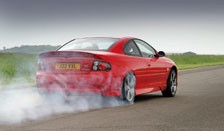Here at Fleet News we spend a lot of time talking to fleet managers about their jobs.
Some look after fleets of thousands, others just a handful.
We also try out the cars coming to market, borrowing dozens of cars a year from manufacturers.
Pretty much all the major carmakers have a press fleet of vehicles to lend to motoring journalists.
There are all sorts of publications and media outlets that request test cars – from trade publications and consumer magazines to national newspapers and television programmes.
Managing such demand and keeping journalists happy is normally a full-time job.
It’s a job that John Brooks has been doing for 15 years as press fleet administrator at Toyota, sourcing, managing and disposing of a huge range of vehicles.
He looks after 180 Toyota and Lexus cars at any one time.
“Around 50 are long-termers, which go out to magazines and television programmes for up to a year at a time,” he says.
“And about 120 go out on a weekly basis.”
Getting the right number of cars in means having a good understanding of the manu-facturer’s business, and John is in regular contact with Toyota in Japan to get a steer on the products in the pipeline.
“We’ll get product bulletins that tell us what vehicles are coming out and when,” Mr Brooks says.
“I will sit down and say ‘car X will be a core model’ and try and get quite a few on the press fleet. If we get 12 vehicles I can service 30 journalists a month.
"If it’s a new model then there’s a lot of interest, but once the demand starts to drop off we’ll cut back on the number of vehicles.”
Veronica Borrelli joined Vauxhall as an apprentice from school and, having progressed to the public relations department, is now press fleet co-ordinator for parent company General Motors.
She looks after 140 vehicles from Vauxhall, Saab, Chevrolet, Cadillac, Corvette and Hummer.
“I look after week-to-week car loans for print media, television and radio,” she says.
“I organise the paperwork, such as movement documentation to delivery companies and engineering workshop papers to ensure vehicles are ready to send out.
“I also order the cars for the fleet. I sit down with each individual brand manager to decide what to have on the press fleet.
"We also speak to the marketing managers to see what their best seller is and if there is a particular model that we need to have available.
"Long-term loans work in a similar way. We ask for some kind of idea of the coverage publications will give us then I go through the ordering process and each car is built especially for that publication.”
Anyone familiar with the antics of Top Gear’s Jeremy Clarkson, James May and Richard Hammond will perhaps imagine that all motoring journalists hurl cars around test tracks amid clouds of tyre smoke.
Surely running a whole fleet of cars subjected to such abuse must get taxing?
“I don’t get that many bad cars back,” insists Mr Brooks.
“People remember the one damaged car, not the 40 that are fine.
“There are always going to be minor wears and tears. I do about 40 loans and collections a week, and out of those 80 movements there are maybe five little minor things, from scuffed wheels to a knock on the bumper.”
Damage is the most obvious day-to-day issue at GM too.
“The regularity of damage isn’t too bad at the moment, but it does vary,” says Ms Borrelli.
“If a car does come back that’s damaged it can have a knock-on effect on the next person that it’s booked for. There are also deadlines that magazines need to adhere to so we have to consider them as well.
“It’s usually a minor thing like a scraped bumper or a kerbed wheel.”
Despite this, there are inevitable misjudgements by the journalists.
“On average, we only get one serious accident a year,” Mr Brooks says.
“We had a Toyota MR2 written off a couple of years ago with just 75 miles on the clock.
"And another very noted public figure-cum-journalist sat his kids on the roof of a car to watch some sort of event and caused £5,000 worth of damage.”
When vehicles are damaged, they are repaired immediately in a dedicated press car bodyshop at Toyota’s technical centre.
“There’s a three-day turnaround period between loans,” says Mr Brooks.
“The cars are checked and anything wrong is rectified. If a car is damaged we’ll swap it with something else or get it to the bodyshop.
“If someone has an accident then we send them out a form and get them to call our insurance company, then we look after it all.
"All the journalists are fully insured through us. If we think you get through the criteria of getting cars, then that’s it. We decide who gets cars by the publication’s circulation, impact, how much space we might get and who the journalist is.”
GM’s last serious incident was three years ago, when the Monaro – an Australian muscle car – first arrived in the UK.
“The previous one was a VX220 Turbo; it was one of the cars I was getting ready for the launch event,” recalls Ms Borrelli.
“There has been the odd time when a car has come back damaged and the story that’s given is ‘I hit a badger’, or something like that.
"But when you look at the damage you think there’s a bit more to it than has been said. Unfortunately, there’s not much I can do about it.
“When something like that does happen we have a look at each individual case. It’s usually a discussion had with our manager and if necessary they try and ascertain exactly what has gone on.
"Most of the time people will just call up and say ‘I’m really sorry, I’ve had an accident’.”
Like anyone hopping between cars regularly, journalists occasionally leave things in the vehicles.
“We get a lot of lost property,” Mr Brooks confirms.
“There have been old clothes, lots of kids’ books, umbrellas and ladies’ underwear.”
Items of underclothing also show up at GM.
“We do get a lot of things left in the cars – sunglasses, chequebooks, bank cards,” says Ms Borelli.
“I’ve had ladies’ underwear that I’ve had to send back, and keys seem to get left a lot.”
Once all the journalists that want to drive the cars have done so, it’s time to move the vehicles on.
“Vehicles are changed every 10,000 miles, although long-termers obviously can stay in use for longer,” Mr Brooks says.
“Vehicles are disposed of through the dealer network. Because we have a dedicated bodyshop, all the cars are thoroughly checked and, if necessary, repaired to as high a standard as possible.
“Press cars are probably the best cars to buy second hand – I’ve only had two breakdowns in the 15 years that I’ve been doing the job, because everything is so well looked after.
"We even sometimes sell cars to the journalists that borrowed them.”
GM keeps its short-term cars on its fleet for six months.
“We have a dedicated remarketing team,” Ms Borrelli says.
“The cars are ‘smart’ repaired if necessary and then defleeted either through dealerships or at auction.”
















Login to comment
Comments
No comments have been made yet.